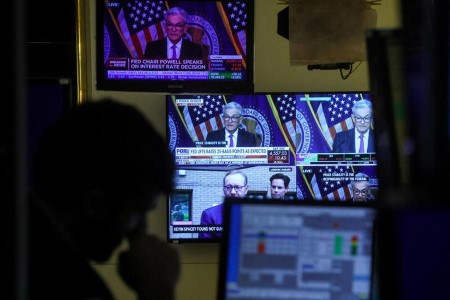




Monthly Economic Update: One for the road
 DOWNLOAD
DOWNLOAD

Inflation Update: Still low, still slow
 DOWNLOAD
DOWNLOAD

Philippines Trade Update: Exports momentum continues
 DOWNLOAD
DOWNLOAD


Market strikes it right on peak Fed … finally: McGeever

ORLANDO, Florida, Aug 10 – Markets are betting that the Fed’s interest rate-hiking cycle is over, and the latest US inflation data suggests this time they may be right.
If housing cost pressures start to ease more in the coming months, as many economists expect, then the Federal Reserve is almost certainly done.
Markets have been “fighting the Fed” for over a year, betting that policy will soon be loosened as the economy lurches toward a recession that still seems nowhere near materializing, while the Fed has relentlessly raised rates to a range of 5.25% to 5.50%.
Traders have been dragged up the rate-hiking hill kicking and screaming, but after the release of July’s inflation figures on Thursday, they now feel they are at the top.
A potential quarter-point hike next month has been taken off the table completely and the chances of a rate hike by the end of the year stand at only 20%, according to fed funds futures.
Headline annual consumer price inflation rose a little less than expected last month to 3.2%, and annual core inflation cooled slightly to 4.7%, as forecast. Both remain well above the Fed’s 2% goal.
But several underlying measures and rolling averages of the last few months show that inflation, by these metrics at least, is back at pre-pandemic levels and closing in on target.
Key to this is “shelter” – essentially housing costs comprising rent and owners’ equivalent rent – which accounted for more than 90% of the total 3.2% increase in headline CPI last month.
Strip out shelter, and “inflation is basically gone,” according to RealPage housing economist Jay Parsons.
“Rent is the most important variable in the CPI’s largest component, which is shelter. And we know where shelter costs are going. Lower,” Parsons added.
Shelter inflation is running at a 7.7% annual rate and has been far stickier than policymakers would have liked. But Parsons reckons lag effects will soon be bringing shelter inflation down more quickly.
Economists and traders focus closely on the shelter component of CPI because one of Federal Reserve Chair Jerome Powell’s favorite inflation gauges is core services inflation minus shelter.
Phil Suttle, founder of consultancy Suttle Economics, notes that the so-called “super-core” inflation measure of services less shelter and energy is now running at a three-month rolling annual rate of only 2.4%.
Julia Coronado, founder of research firm Macropolicy Perspectives, notes that annual headline inflation on a three-month rolling basis is just 1.9%, and Andreas Steno Larsen, CEO at Steno Research, says inflation excluding shelter on an annualized quarter-on-quarter basis “is basically gone.”
The following charts make that case. Traders are betting that Powell and his colleagues are paying close attention.
(The opinions expressed here are those of the author, a columnist for Reuters)
(Reporting by Jamie McGeever; editing by Jonathan Oatis)
This article originally appeared on reuters.com





 By Reuters
By Reuters